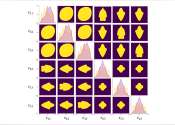A cool advance in thermoelectric conversion
More than two-thirds of the energy used worldwide is ultimately ejected as "waste heat." Within that reservoir of discarded energy lies a great and largely untapped opportunity, claim scientists in MIT's Department of Nuclear ...
Dec 14, 2020
0
43









